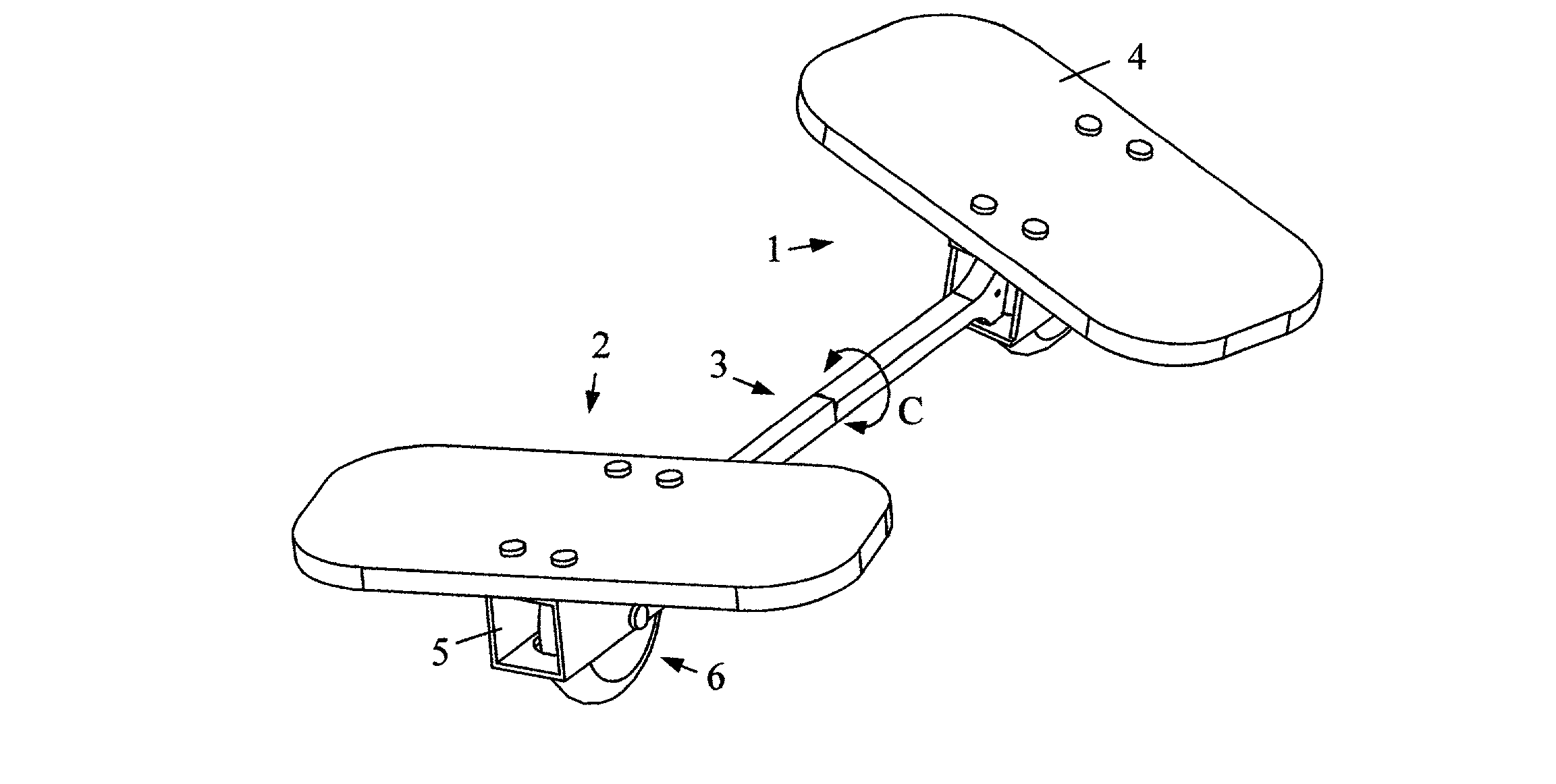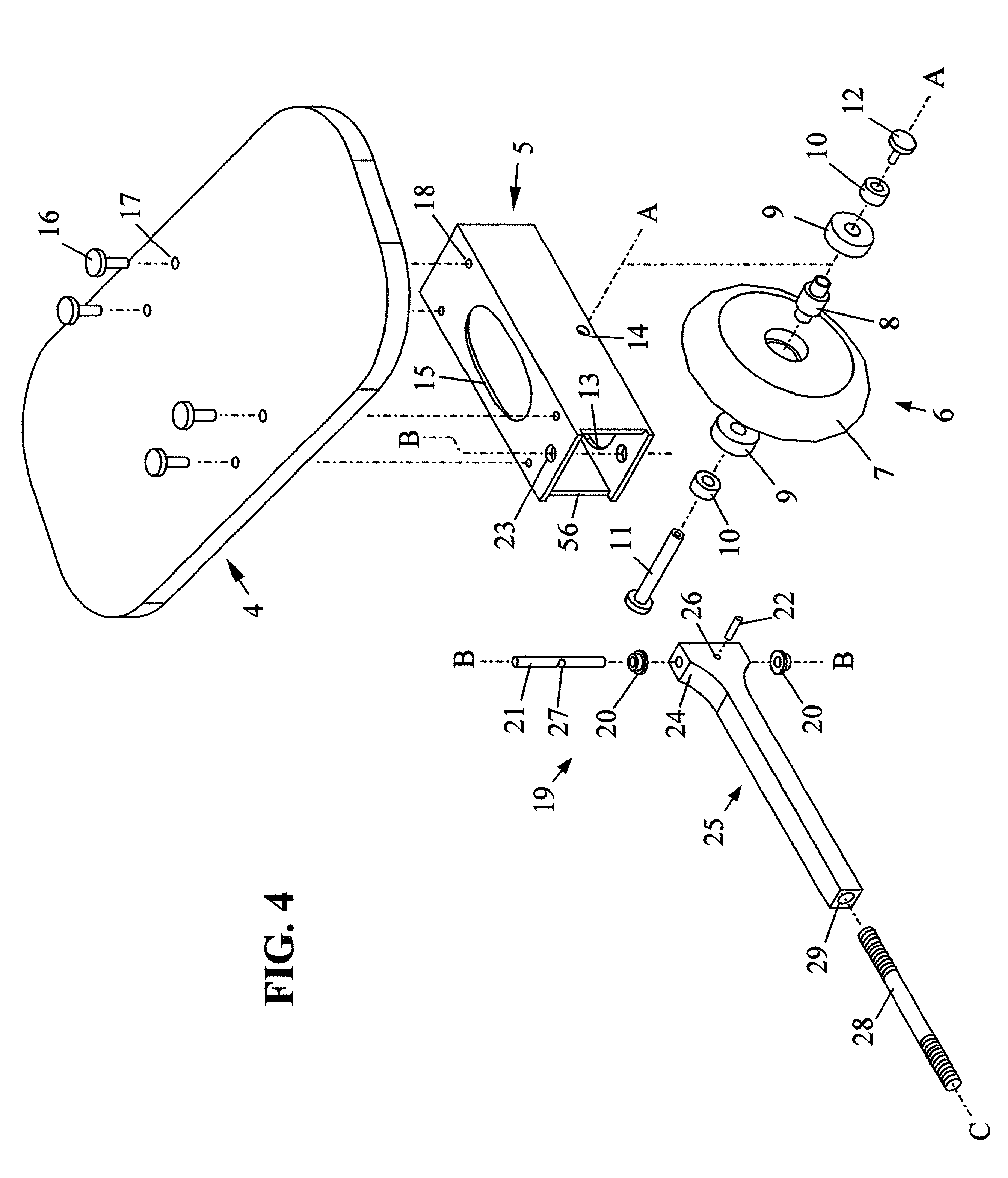Balancing skateboard
a technology of skateboards and balancing boards, applied in skateboards, vehicle components, sport apparatus, etc., can solve problems such as statically unstable, and achieve the effects of low friction resistance, good dynamic stability, and insensitivity to surface roughness
- Summary
- Abstract
- Description
- Claims
- Application Information
AI Technical Summary
Benefits of technology
Problems solved by technology
Method used
Image
Examples
Embodiment Construction
[0038]The following description presents three preferred embodiments of the invention labeled I, II, III and IV for use on smooth pavement, rough surfaces, ice and snow, respectively. Additional variations and possible enhancements are also described.
[0039]Embodiment I shown in FIGS. 1–7 includes a front footboard 1, a rear footboard 2 and strut 3 which connects the two footboards. The rider stands with one foot centered over each footboard and steers by pivoting one or both feet about the two vertical steering axes B. The strut in this case serves three functions: it restrains moments about the heel-toe axes D which would otherwise cause the ankle to turn, it supplies the inward force which would otherwise require excessive exertion of the rider's inner thigh muscles, and it reduces the risk of knee injury by limiting the steering travel. To minimize unwanted steering torque it is also desirable for the two footboards to tilt independently. This is achieved by allowing torsional ro...
PUM
 Login to View More
Login to View More Abstract
Description
Claims
Application Information
 Login to View More
Login to View More - R&D
- Intellectual Property
- Life Sciences
- Materials
- Tech Scout
- Unparalleled Data Quality
- Higher Quality Content
- 60% Fewer Hallucinations
Browse by: Latest US Patents, China's latest patents, Technical Efficacy Thesaurus, Application Domain, Technology Topic, Popular Technical Reports.
© 2025 PatSnap. All rights reserved.Legal|Privacy policy|Modern Slavery Act Transparency Statement|Sitemap|About US| Contact US: help@patsnap.com



